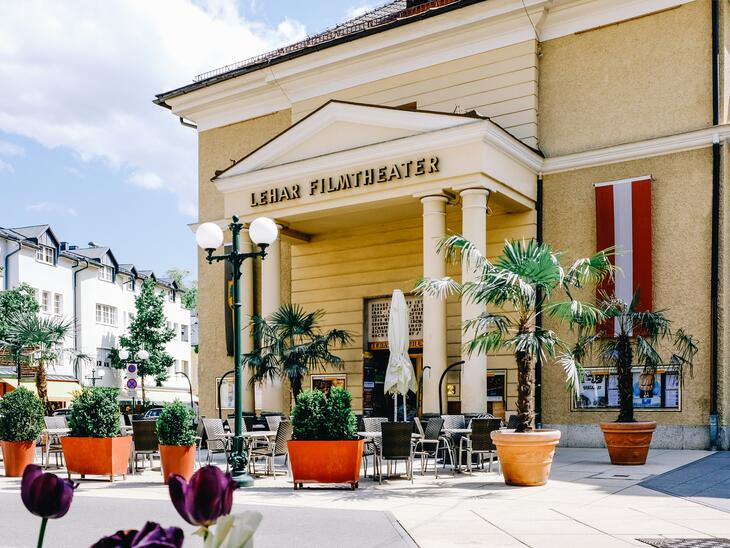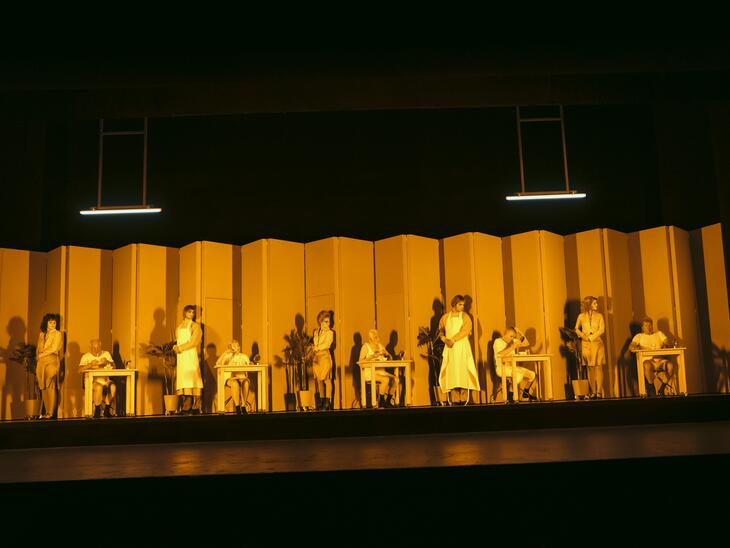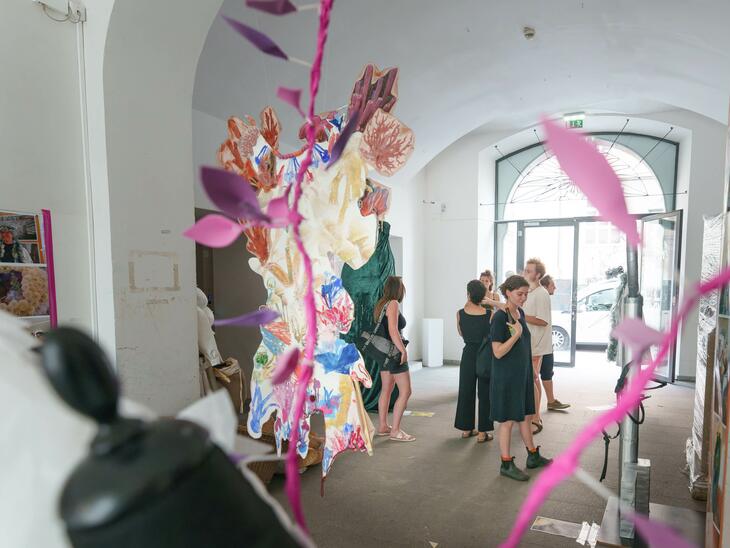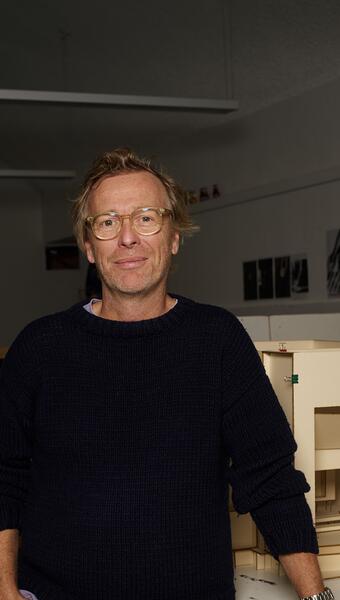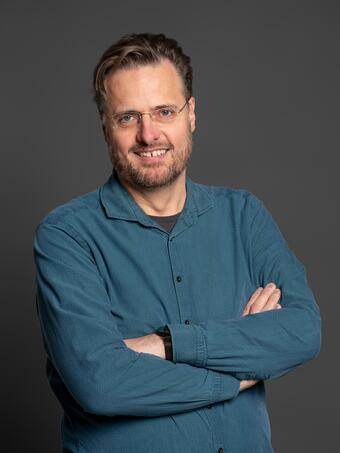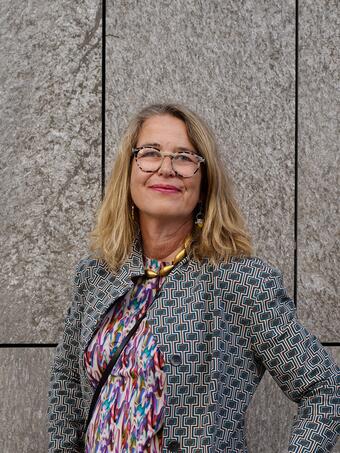- Is it possible to study costume only?
No, the study programme Stage and Costume Design focuses on stage, space, film, exhibition architecture as well as costume. A modular structure of the degree programme is not offered.
- How long does the degree programme take?
The curriculum provides for a minimum duration of 8 semesters, although a longer period of study of 9 to 11 semesters is often accepted due to recommended practical work at theatres or in the film business. In return, if the student has completed previous studies close to the art and can prove that he/she has successfully completed all courses, he/she could also apply for a reduction in the length of study.
- How many study places are available? How many applicants are trying to gain a place?
5-8 new students are admitted each year. Approximately 20 to 40 applicants take the entrance examination each year.
- Do I need a Matura or Abitur to study?
No, the examination board can grant admission to studies without Matura or Abitur in the context of successful completion of the examination.
- Is proof of an internship related to the subject required?
- No, it is not.
- Is German a prerequisite for admission?
Within the framework of the admission examination, the commission must confirm that the knowledge of the German language is sufficient for studying or that an additional language examination could be successfully taken within one semester. However, the language of instruction is exclusively German.
- Can I combine my studies with a professional activity?
Experience has shown that in the first four semesters a full-time professional commitment is difficult to combine with seminar and studio work, as attendance at seminars is sometimes compulsory.
- What academic degree does the stage design programme end with?
The degree course in stage design ends with a two-stage diploma thesis (artistic-written work and diploma presentation); upon successful completion, the student is awarded the academic degree Magister/Magistra artium (Mag. art.).
- In which form does the registration for the entrance examination take place?
Online via the registration portal for applicants.
- How many admission examination dates are offered?
For the start of the winter semester, two possible admission examination dates are offered, one at the end of June and one at the end of September. It is not possible to start the programme in the summer semester, therefore no dates are offered for this.
- What should the portfolio contain?
The portfolio should contain a compilation of the student's own work (drawings, sketches, drafts, photos, models, etc.), whereby the form and scope can be chosen individually. Basically, the portfolio should represent the previous independent artistic work, reflect the view of the environment, one's own world view and biography, and testify to the will to make theatre and art. Works that have been created in the context of various school lessons with given tasks should at best make up a subordinate part of the portfolio. Proof of all painting and drawing techniques as well as the implementation of ideas in all conceivable two- and three-dimensional representation techniques is not mandatory, but the gift of being able to express oneself with a pencil and communicate through sketches is.
- What shape/size/scope must the folder have?
There are no restrictions in terms of shape or format. The submission of three-dimensional objects is possible. Reproductions should only be used for works that cannot be transported.
- Is it possible to show the work in advance in a personal meeting?
Yes, appointments can be made through the secretariat. A non-binding portfolio discussion can, under certain circumstances, lead to clarify misunderstandings regarding the form and scope of the portfolio. At the same time, it also gives you the opportunity to visit the studios on site and, if necessary, to make contact with students of stage design.
- How long does the portfolio remain at the university?
The portfolio remains in the department from the time it is handed in until the end of the entrance examination, so it cannot be collected early for a parallel procedure.
- Are there tuition fees or possibilities for scholarships?
- see Service & Support
- Is it possible to visit the department during the study period?
Of course, but a short registration at the secretariat is requested. At the end of the summer semester (30 June) there is also the opportunity to see students' work and meet teachers as part of the studio tour.
- Who is invited to the examination, or is the selection of examination candidates already made on the basis of the portfolio?
Due to the possibility of submitting the portfolio up to three weeks before the exam, an invitation to the exam is issued in writing at very short notice. In principle, an initial selection is made.
- Will the portfolio be returned at the end of the procedure?
No, the portfolio can be taken away during the three-day examination or collected from the secretary's office at a later date: Mon-Fri 8.00-12.00 in the secretariat Paris Lodron Str. 9, 2nd floor. If the folder is to be returned by post, the corresponding postage and packaging costs must be paid to the department in advance. Information is also available from the secretary's office:
+43 676 88122 461 oder barbara.plamberger@moz.ac.at.
- How does the examination (written exam) proceed, can I prepare?
The written exam means working intensively and in a structured way for three days in the department or studio, whereby the tasks should be partly sketched, in the form of drawings or by means of models. Working material (paper, paint, model building material etc.) should already be brought along.
- Is it possible to take a one-year break after successfully completing the exam and start studying later?
This is theoretically possible, but requires an agreement with the head of department regarding the start date.
